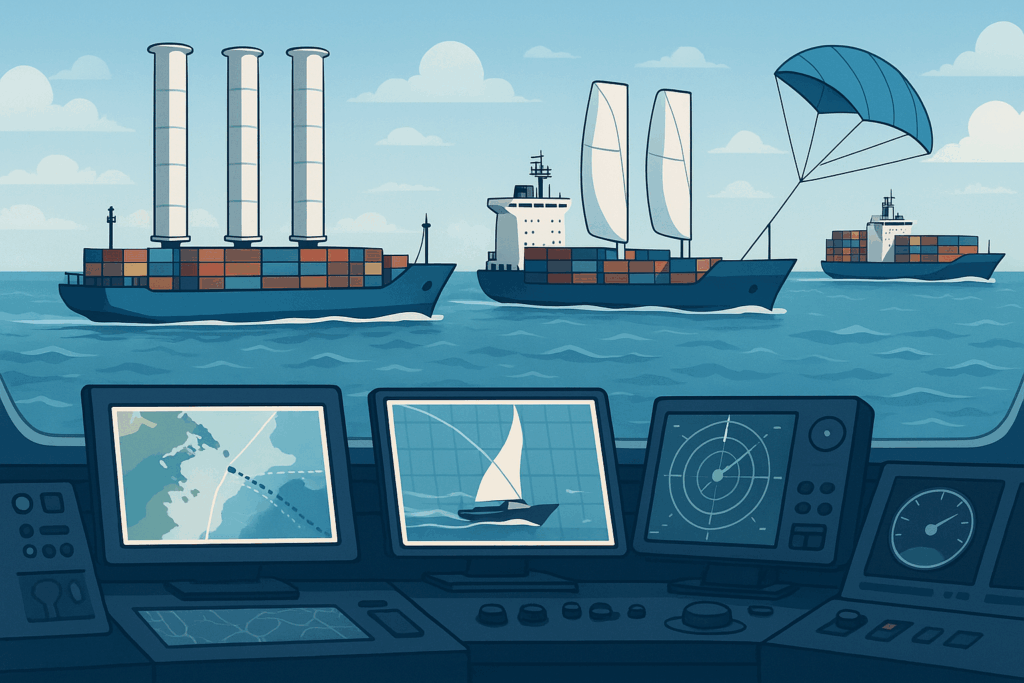ProjeCT
The aim of this research project, funded by the French Innovation Defense Agency (AID), led by ENSTA Bretagne and ENSM, in partnership with the Ecole Navale, is to provide scientific advances and technological breakthroughs in digital tools for the design and operation of civil and/or military vessels using auxiliary wind propulsion. More specifically, the aim is to develop and validate a software suite of numerical tools enabling rapid and accurate performance evaluation of different configurations given by a ship class, a vessel propulsion technology, as well as an operational profile and/or a maritime route, in order to identify optimal configurations, and to apply these tools to situations of interest to maritime transport and defense.

The digital suite will consist of a temporal solver for ships equipped with a wind propulsion system, four complementary modules (fuel consumption estimation module, routing algorithm, implementation of international navigation rules to prevent collisions at sea (COLREG) and use of a cycloidal thruster to counter the drift force generated by auxiliary wind propulsion), and a 3D graphic navigation simulator, assembled to form a modular digital tool. Modular here means the ability to study different ship sizes and propulsion systems (auxiliary or main).
More specifically, the aim is to develop general manoeuvrability models that can be coupled with existing seakeeping models. Numerical-digital and/or numerical-experimental comparisons will be carried out in order to validate the various models implemented and the solutions calculated by the solver. The simulator will numerically solve the equations of motion of a ship with N<=6
degrees of freedom (d.o.f.) in the time domain, and written in the external forces base. In addition, the solver will also be modular in terms of the force models considered in the equations of motion, in order to make the future use of the solver as accessible as possible (i.e. all types of users, engineers with or without computing resources, academics, architects, etc.). The aim here is also to meet the strong demand and need of a group of academic and industrial players in the maritime sector who do not have the vocation and/or the human, financial and/or material resources to develop such tools. So, for example, hydrodynamic forces, which are modelled by regressions including hydrodynamic derivatives, can be processed by three different methods. Similarly, different aerodynamic force models, corresponding to different vehicle propulsion systems, will be developed and implemented in the solver depending on the accuracy and fidelity of the numerical method selected.
The set of developed tools will constitute a suite of high-performance, innovative and free to use digital tools for civil and/or defence applications, and accessible to a vast public of users (academic and/or industrial) via this webpage specifically created for this project.